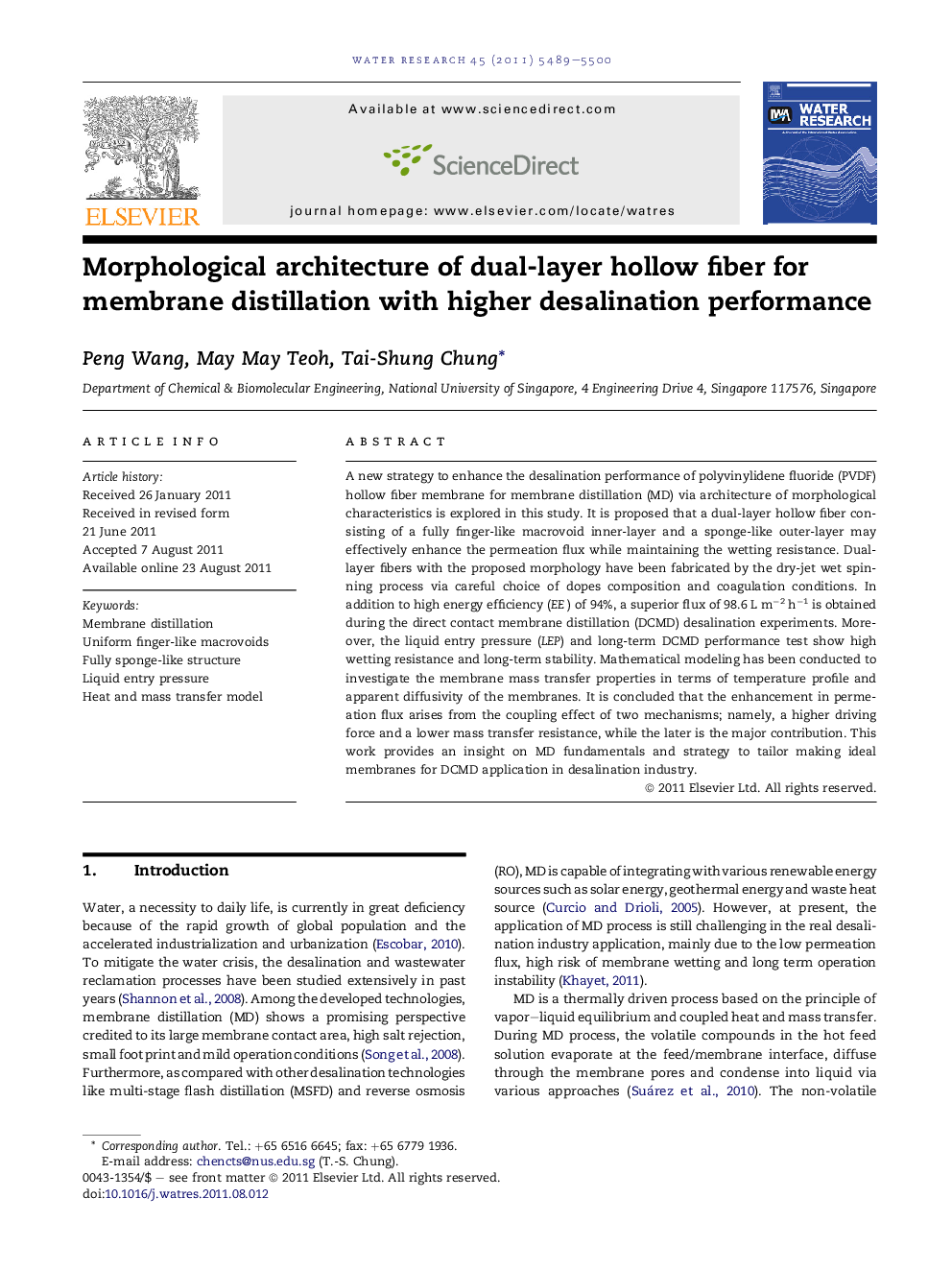| Article ID | Journal | Published Year | Pages | File Type |
|---|---|---|---|---|
| 4483168 | Water Research | 2011 | 12 Pages |
A new strategy to enhance the desalination performance of polyvinylidene fluoride (PVDF) hollow fiber membrane for membrane distillation (MD) via architecture of morphological characteristics is explored in this study. It is proposed that a dual-layer hollow fiber consisting of a fully finger-like macrovoid inner-layer and a sponge-like outer-layer may effectively enhance the permeation flux while maintaining the wetting resistance. Dual-layer fibers with the proposed morphology have been fabricated by the dry-jet wet spinning process via careful choice of dopes composition and coagulation conditions. In addition to high energy efficiency (EE) of 94%, a superior flux of 98.6 L m−2 h−1 is obtained during the direct contact membrane distillation (DCMD) desalination experiments. Moreover, the liquid entry pressure (LEP) and long-term DCMD performance test show high wetting resistance and long-term stability. Mathematical modeling has been conducted to investigate the membrane mass transfer properties in terms of temperature profile and apparent diffusivity of the membranes. It is concluded that the enhancement in permeation flux arises from the coupling effect of two mechanisms; namely, a higher driving force and a lower mass transfer resistance, while the later is the major contribution. This work provides an insight on MD fundamentals and strategy to tailor making ideal membranes for DCMD application in desalination industry.
Graphical abstractFigure optionsDownload full-size imageDownload high-quality image (139 K)Download as PowerPoint slideHighlights► We carry out morphological design to enhance membrane distillation performance. ► Dual-layer fiber with macrovoid inner- and sponge-like outer-layer is designed. ► A superior flux of 98.6 L m2 h−1 is obtained during the DCMD experiments. ► Mathematical modeling is conducted to reveal the mechanism of flux enhancement.
